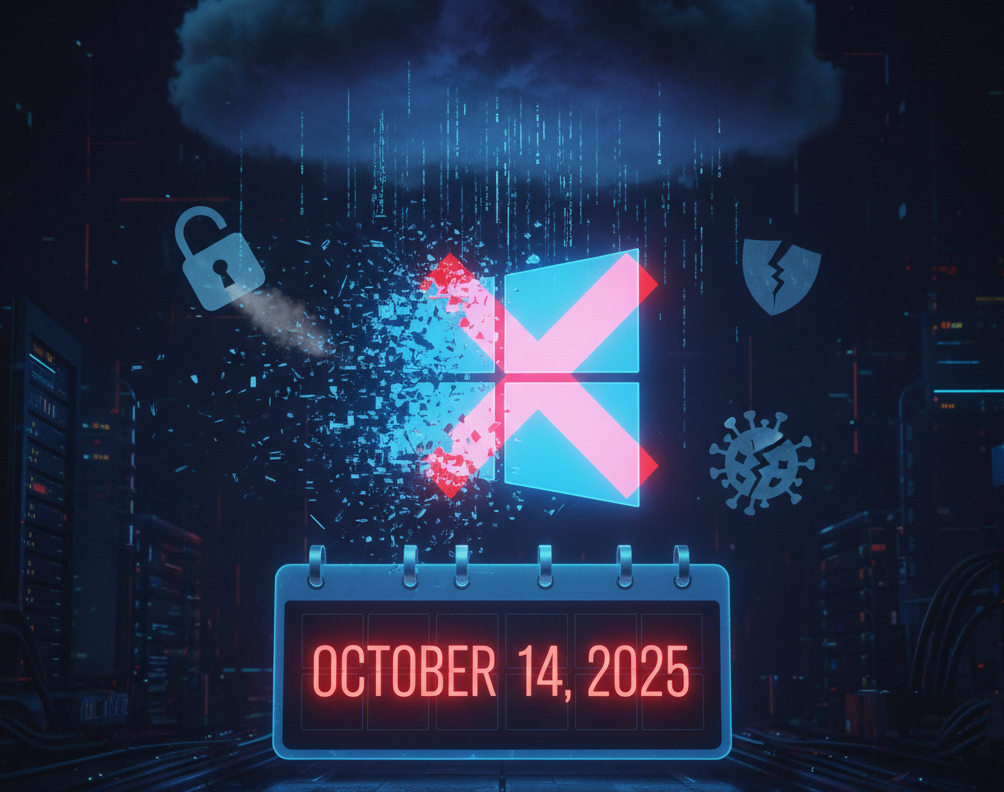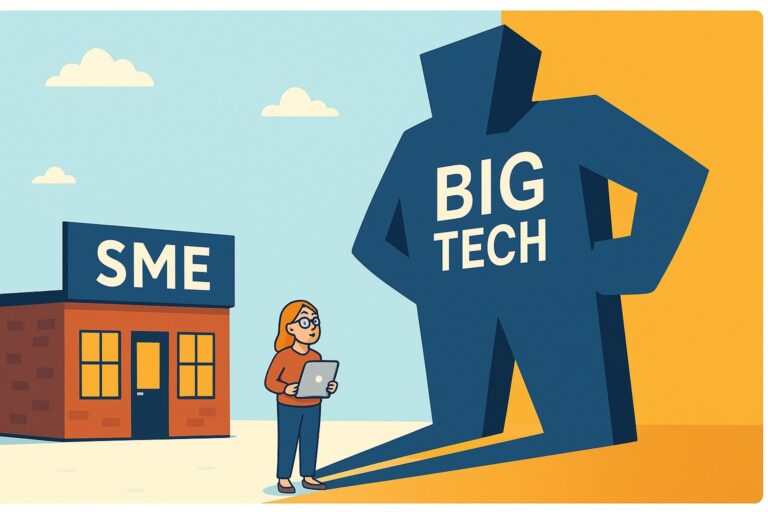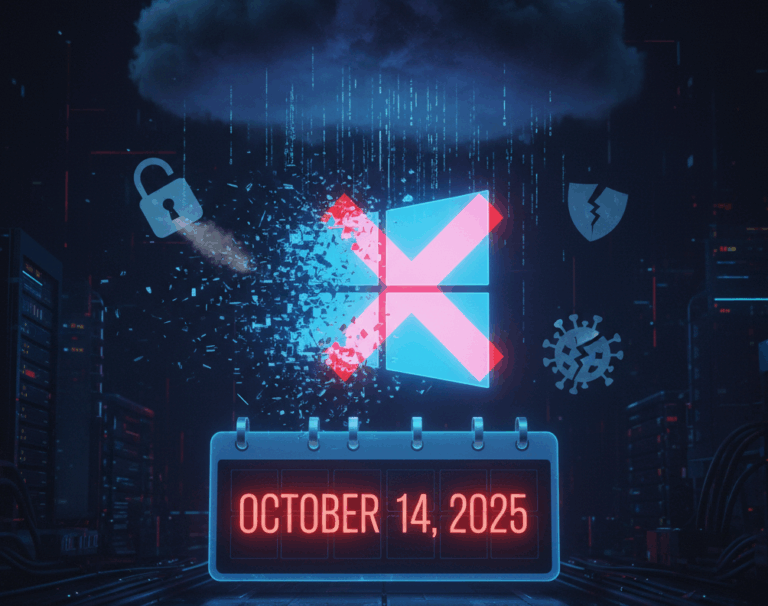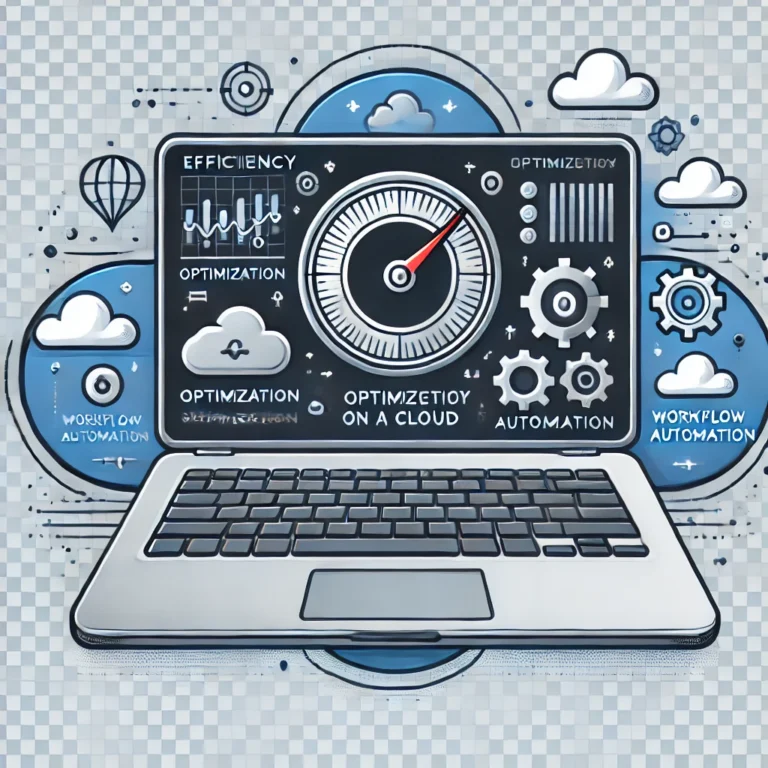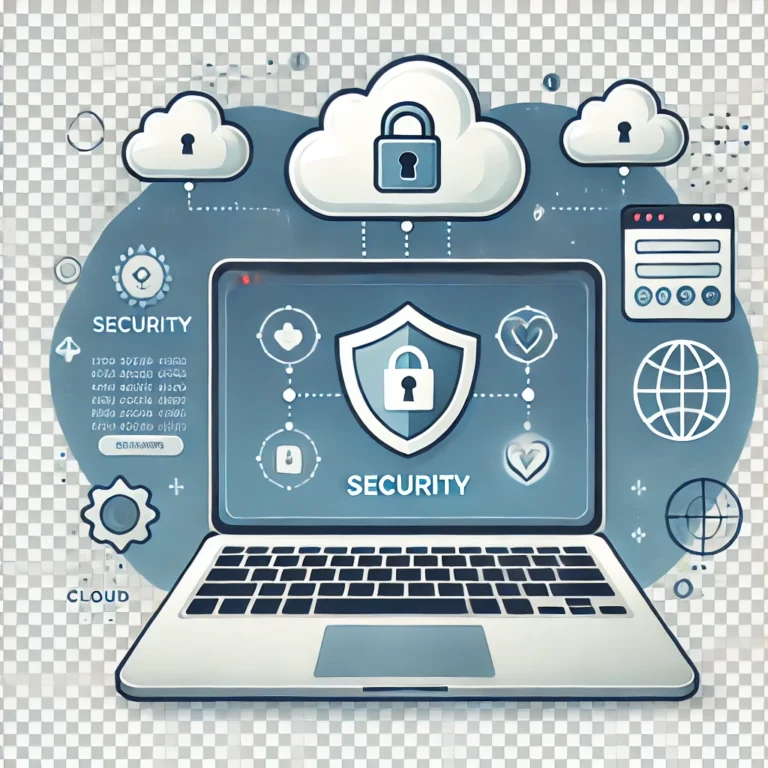Windows 10 has been part of the working landscape for over a decade. On 14 October, however, Microsoft will end support for Windows 10. Without taking action, businesses will face disruption as support and software updates will no longer be provided. So, what should businesses do when Windows 10 reaches end of support?
What does Windows 10 end of support mean for businesses?
Windows 10 reaching end of support – also colloquially called the ‘Windows 10 switch-off’ – means that Microsoft will no longer provide updates for Windows 10 as it has done for the past 10 years. Why does this matter? Because every machine which currently runs on Windows 10 will, after 14 October, no longer be protected against viruses and other forms of malicious attacks.
This means not only will your business be significantly less secure, but any client data you hold will also be put at risk, which could lead to a range of issues under the new Data (Use and Access) Act 2025.
Where does your business go from here?
Any IT professional will know that security always competes with a business’s bottom line in terms of priority – but this is one risk no one can afford to take. The options presented to those currently using Windows 10 are varied.
Upgrade plans
Support plans per machine, per year
Microsoft are currently offering extended security update plans for businesses using Windows 10 for a maximum of three years. This is a costly option, starting at £47.50 (as of September 2025) per machine for the first year, doubling every year for the three year period. This means a business with, for example, 500 machines will be left with no option but to pay around £71,250 for three years’ support. This kicks the can down the road for a while – but the need to upgrade to Windows 11 will still apply after that, and the assumption is made that Microsoft won’t be offering any more support/upgrade plans after this three-year window. Also, it is worth remembering that there are certain prerequisites such as the requirement for devices to be Microsoft Entra joined. See the full list here: Microsoft – Enable Extended Security Updates
Pricing overview:
| ESU Year Period | Cost (per device) |
|---|---|
| Year 1 | Oct 2025 – Oct 2026: ~£47.50 |
| Year 2 | Oct 2026 – Oct 2027: ~£90 |
| Year 3 | Oct 2027 – Oct 2028: ~£190 |
Support plans for education
Good news for education: Education customers and qualifying charities receive different pricing, opening up a great opportunity to save some much-needed funds and reduce the overall time pressure.
Pricing overview:
| ESU Year | Cost (per device) |
|---|---|
| Year 1 | Free (£0) |
| Year 2 | Price not confirmed |
| Year 3 | Price not confirmed |
One-year consumer support
Microsoft are also offering the option for consumer users to pay around £22.20 per machine for a further years’ worth of support. This, again, puts off having to upgrade for a further 12 months – but the issue will still be there next October. Currently, consumer ESU options are only available until October 2026.
Pricing overview:
| ESU Option | Details | Estimated UK Cost |
|---|---|---|
| Paid | A one-year subscription available to purchase through the Microsoft Store. | ~£22.50 |
Upgrading to Windows 11
By far the most unrealistic of the options being touted in the run up to the October switch off is replacing certain components in your Windows 10 machines, or paying a professional to do it for you. While some businesses will no doubt employ IT professionals who will happily root around in machines, painstakingly replacing components so as to avoid upgrading, it is unlikely they will want to do this on their own time, as an additional responsibility to an already stressful job. Nor is it likely that SMEs will invest valuable capital – in an already precarious economy – in contractors replacing components. Alongside this, it may not be a feasible option if your business hasn’t approved a Windows 11 creation or build.
Converting to a new operating system
Linux
Linux is often mentioned by IT professionals and enthusiasts alike as being a superior operating system to Windows. Free to use, without licensing fees, and less vulnerable to malware and viruses, the penguin-emblazoned OS is a firm favourite amongst the community. It runs smoothly on old hardware and doesn’t appear to collect data in the same way Microsoft does. It’s also customisable and developer-friendly, and has a worldwide network of support, forums and documentation.
While this is all very positive, the issue is faced not when converting the operating system but converting users to a new operating system. Most workforces will have used Windows since it was first brought in. Similarly, Millennials and Generation Alpha workers will only have worked in computer-driven environments, of which most will have been exposed to Windows operating systems. The IT department of any company, large or small, faces a mammoth task in converting a workforce to a new operating system when they have spent decades using Windows, and is not for the faint-hearted.
Chromebook
Chromebook, offered by Google, provides affordability and simplicity. The interface is minimal and works quickly. Chromebook also provides durability and security. They are often used in the education world as a cheap alternative to laptops and travel well. However, along with the issues noted with Linux above in terms of integrating a new OS with the workforce, they also have limited offline functionality, relying as they do on internet access, and are not best used for people who carry out resource-heavy tasks such as video editing. They also struggle with desktop apps such as Microsoft Access. Alongside this they are tied to the Google ecosystem, which may not sit well with IT departments and businesses which value privacy.
Desktop-as-a-Service (DaaS)
Desktop-as-a-Service provides users with an interface they understand – a virtual desktop they can log into from anywhere which runs normally and has support whenever they need it. This means in practice that Windows 11 will run on a Windows 10 machine, although continued Microsoft security updates for Windows 10 may still be required to keep a DaaS such as Novacloud Workspace (https://novacloud.net) running. These security updates should also be compliant with your company policy or external accreditation. While plans offered by Microsoft are costly, and other operating systems will take time to integrate with the workforce, using DaaS provides real-time access without the need to invest in new laptops or upgrade to Windows 11. Correctly configured, and with the right security in place, Windows 11 can potentially be run ‘on top’ of Windows 10, even from startup. Another option is to use a lightweight Linux distro such as Linux Mint with kiosk mode which effectively turns a laptop into a thin client, so that a Cloud DaaS solution can be run on top – whether that be Windows 365 or AVD powered by something like Novacloud Workspace.
Providers often have pay-as-you-go subscriptions, keeping pricing flexible and in line with the needs of the business. Alongside this, DaaS provides scalability and flexibility for organisations of any size, meaning businesses can react to change overnight and keep running without interference, along with lower costs and maintenance. Because desktops are hosted in the cloud, users can keep working in any condition.
TL;DR: What Are Your Options?
Microsoft will end support for Windows 10 on 14 October 2025, leaving machines vulnerable and non-compliant with new data laws. Businesses must act to avoid security risks and operational disruption.
Your Options:
- Windows Support Plans: A potentially costly stopgap, requiring a payment of up to £47.50 per machine; a price which doubles every year for a maximum of three years. Education customers do get a better deal though.
- Upgrading to Windows 11: Impractical for most SMEs; time-consuming and expensive – similarly, not feasible if your company hasn’t approved a Windows 11 creation of build.
- Switching OS
Linux: Free, secure, and customisable—but hard to retrain staff.
Chromebook: Affordable and simple, but limited offline use and app compatibility.
- Desktop-as-a-Service (DaaS): Cloud-based virtual desktops with familiar interfaces, scalable pricing, and minimal disruption—ideal for continuity without hardware upgrades, particularly in the education sector for the first year at least. It is worth remembering also that for VMs running in the cloud, extended support is built-in until 2028 and will not attract a premium, this includes machines running on AVD if the source image is Enterprise or Multi-Session.
Bottom line: DaaS offers the smoothest transition to Windows 11 at least, while Windows support plans only delay the inevitable. Businesses need to plan now to stay secure and compliant. An out-of-the-box platform like Novacloud Workspace can simplify the setup and management of VDI systems like AVD to enable any business to quickly take the DaaS option.

